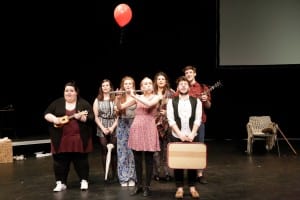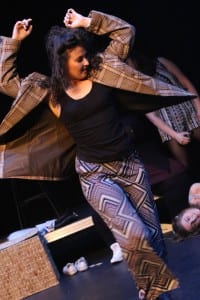
I cannot believe When You See It is finished!!! I still think I am in shock that this whole crazy and amazing experience is over. I didn’t know what to do with myself the day after the show, for the past 5 months my whole focus has been on Refract!
We had only dreamt of the response that we received audience members were crying and laughing all at once, things that had never been funny became hilarious, and the sadness was enhanced when over 150 people are in absolute silence as the emotion switched on stage. Our quick changes between the absolute highs to the most sensitive and haunting moments were what kept the audience completely transfixed on the stage.
The day was incredible and so was the performance, we were all exhausted and started to feel very ill on Sunday yet from somewhere during the warm up led by Sophie 7pm, there was a sense of energy that captured us all. As cliché as it sounds, the warm up left the whole cast focussed and ready to give it everything we had.
At 7.20pm we all got into our positions for the door to open and the audience to start finding their seats. I had to lie down and be completely still, whereas the rest of the cast were interacting with each other. I sat and listened to the audience chatting away and speculating what the performance was going to entail. At that moment it all became very real; this was the end of my university experience and potentially the last time I would perform on this stage with the rest of Refract.
I was extremely nervous as we got in to our opening positions, the music aspect of the show was something I had little experience previously compared to the rest of the cast and I did not want to let them down. As the show was so jam packed and had lots of elements, I wanted to capture each moment perfectly. This type of performance was nothing that I had been part of before, I did not think I would enjoy and fall in love with being in a show that had singing, dancing and musical instruments as I am not a fan of cheesy musical style shows. Yet I 100% have loved the whole entire process and show, and that is thanks to Laura amazing director talents and Refract. When I was on stage, the whole show went past so fast that the nerves disappeared instantly, I just gave it everything I had, and at the end when it was my tap duet with Tom, which was one of my favourite scenes, I was so grateful to have the opportunity to tap again on stage and especially with Tom.
